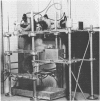Abstract
The effects of the type of reinforcer on auditory sensitivity and equal-loudness data were determined in the squirrel monkey. The monkeys, restrained and provided with earphones, were conditioned to depress and hold a bar down in the presence of a stimulus light and then to terminate the holding response after onset of a tone. In Experiment 1, the specified behavior sequence postponed electric shock; in Experiment 2, a food reinforcer was dependent on bar release during the tone. The shape of the auditory sensitivity function and the acuity level at each frequency were the same for the two procedures. The audible frequency range extended from below 0.125 kHz (lowest frequency used) to 46 kHz. Sensitivity was maximum at 8 kHz. Latency of bar release following tone onset served as the basic data for constructing a family of equal-loudness contours. The type of reinforcer appeared not to be a determinant of either the shape of individual loudness contours or the pattern of family of equal-loudness functions. At the lower sound-pressure levels, the equal-loudness contours closely paralleled the threshold curves. At more-intense levels, the contours tended to flatten and depend less on frequency.
Full text
PDF
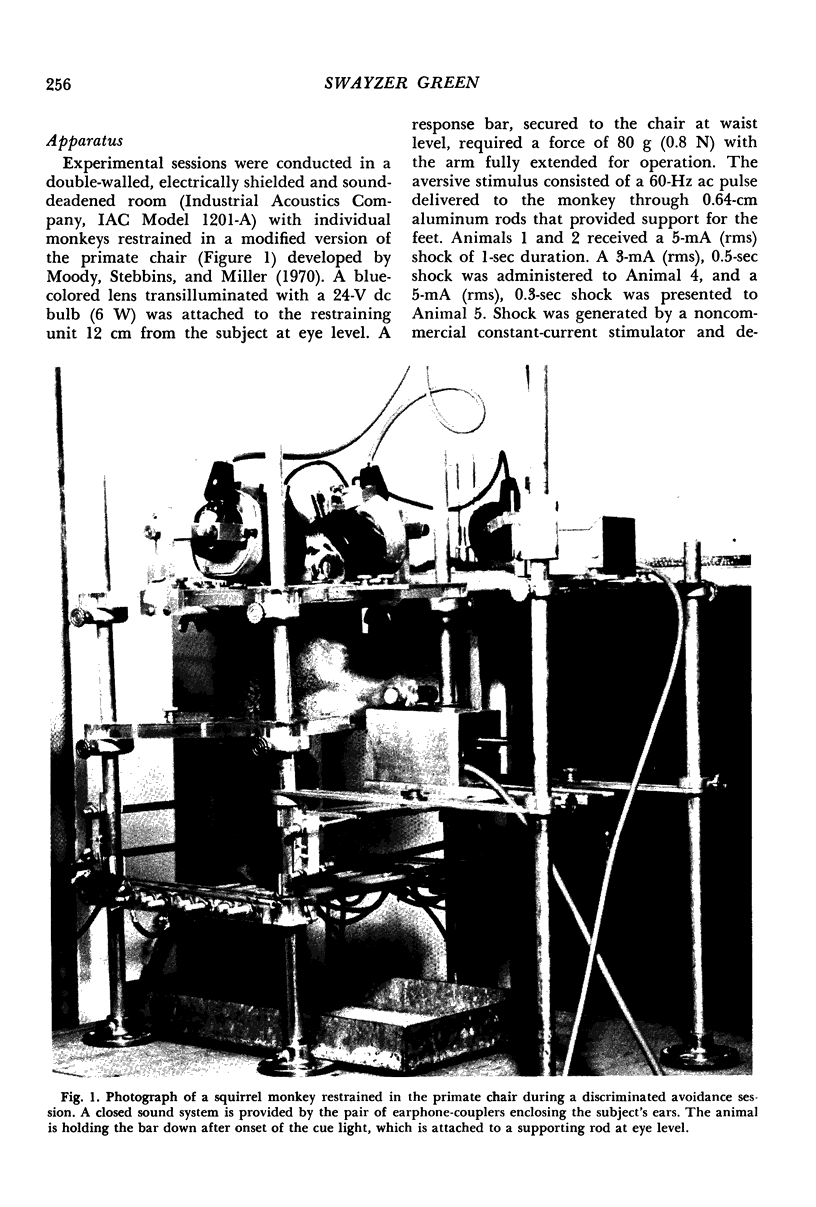
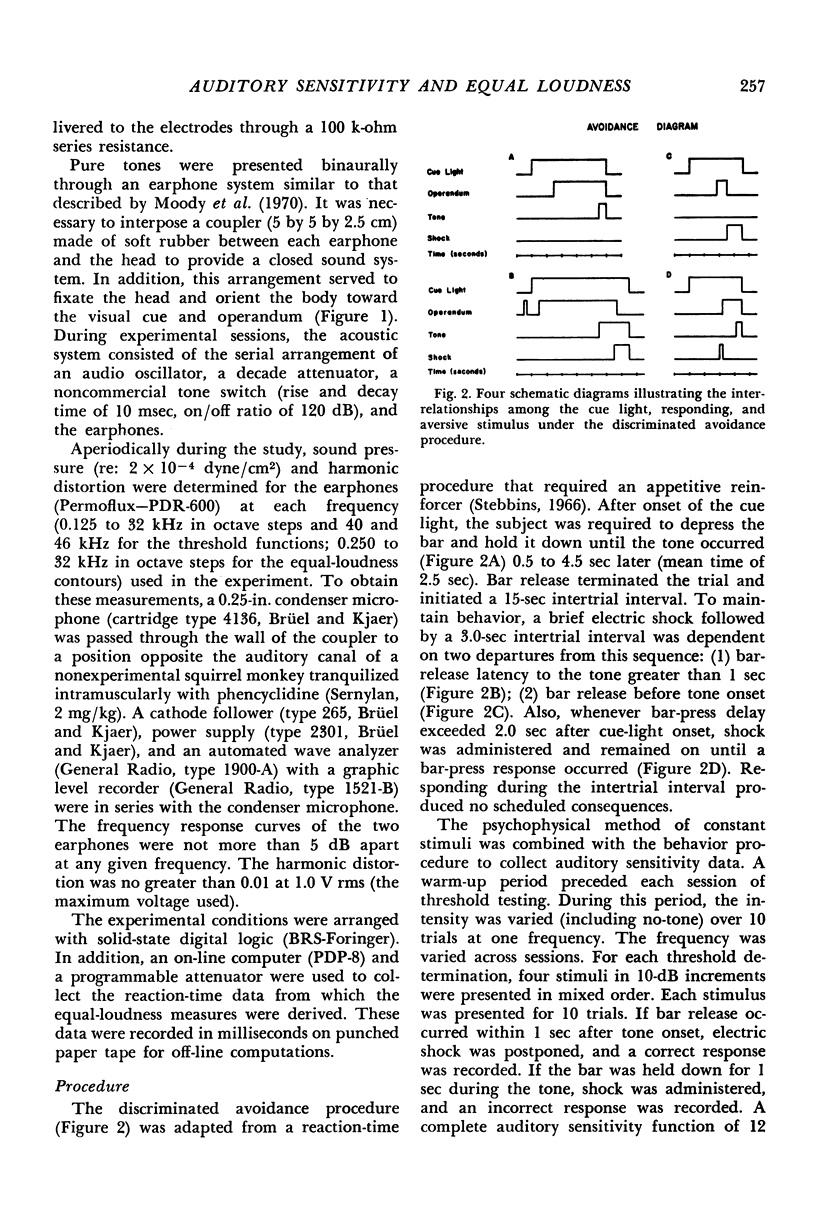

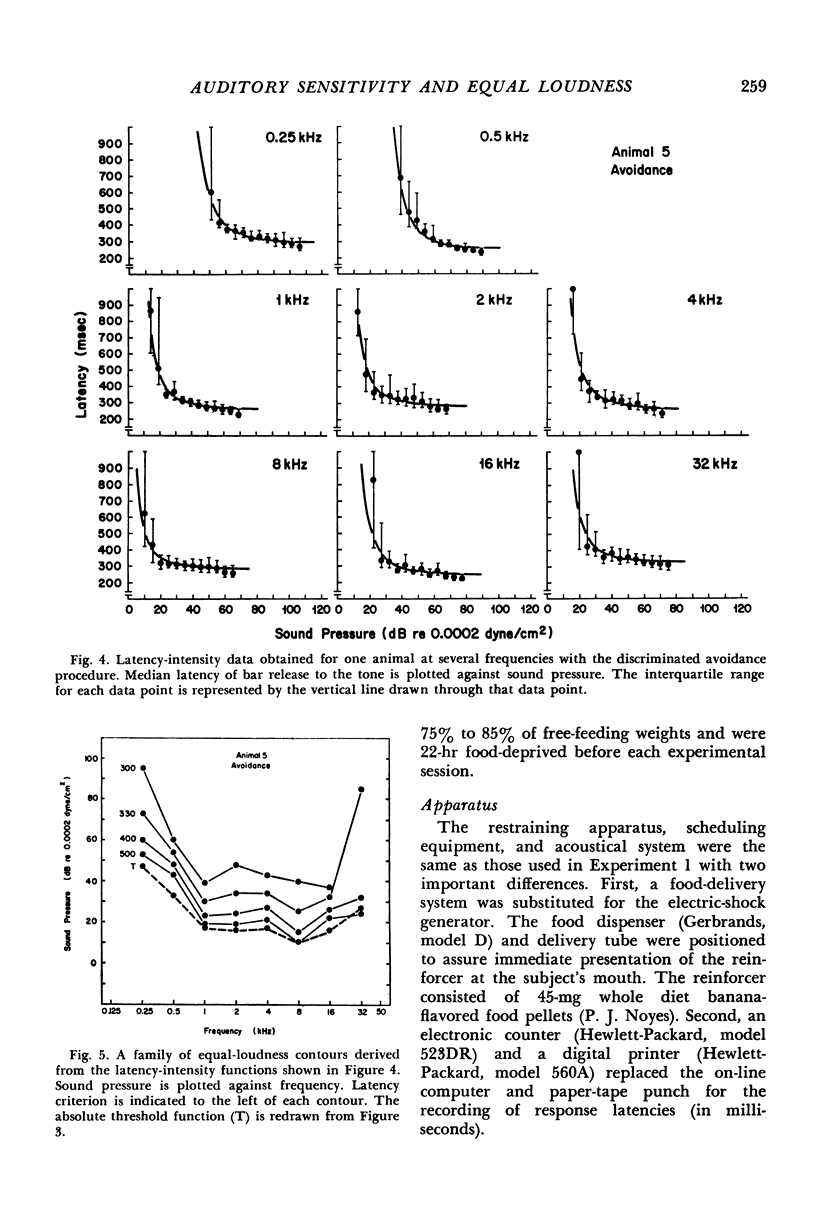
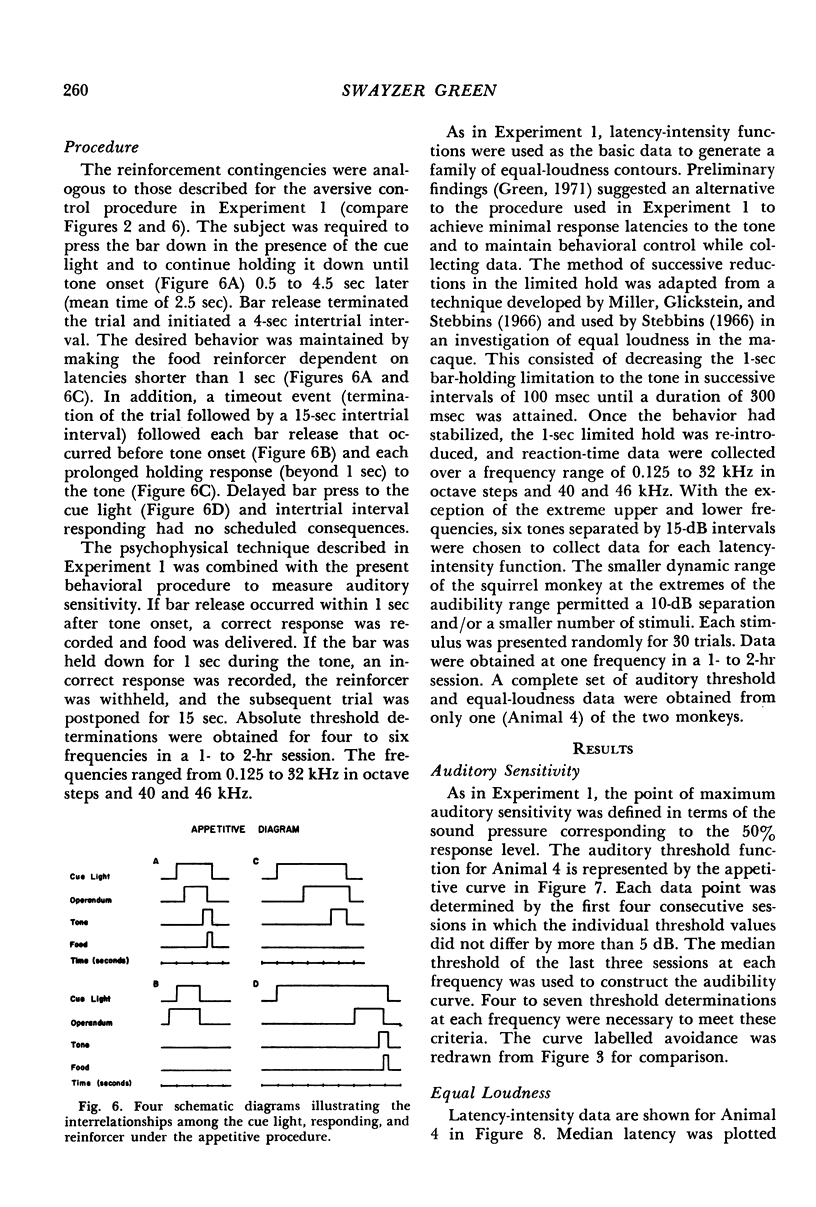
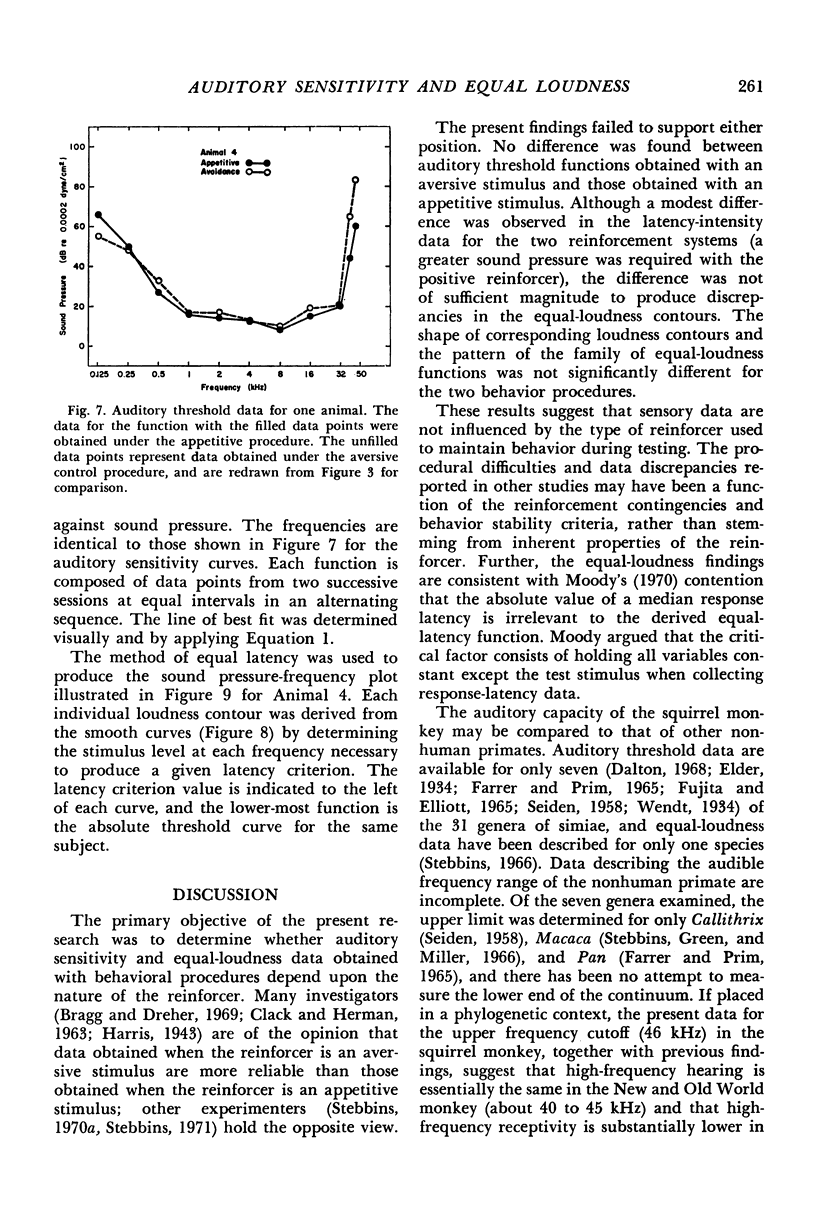
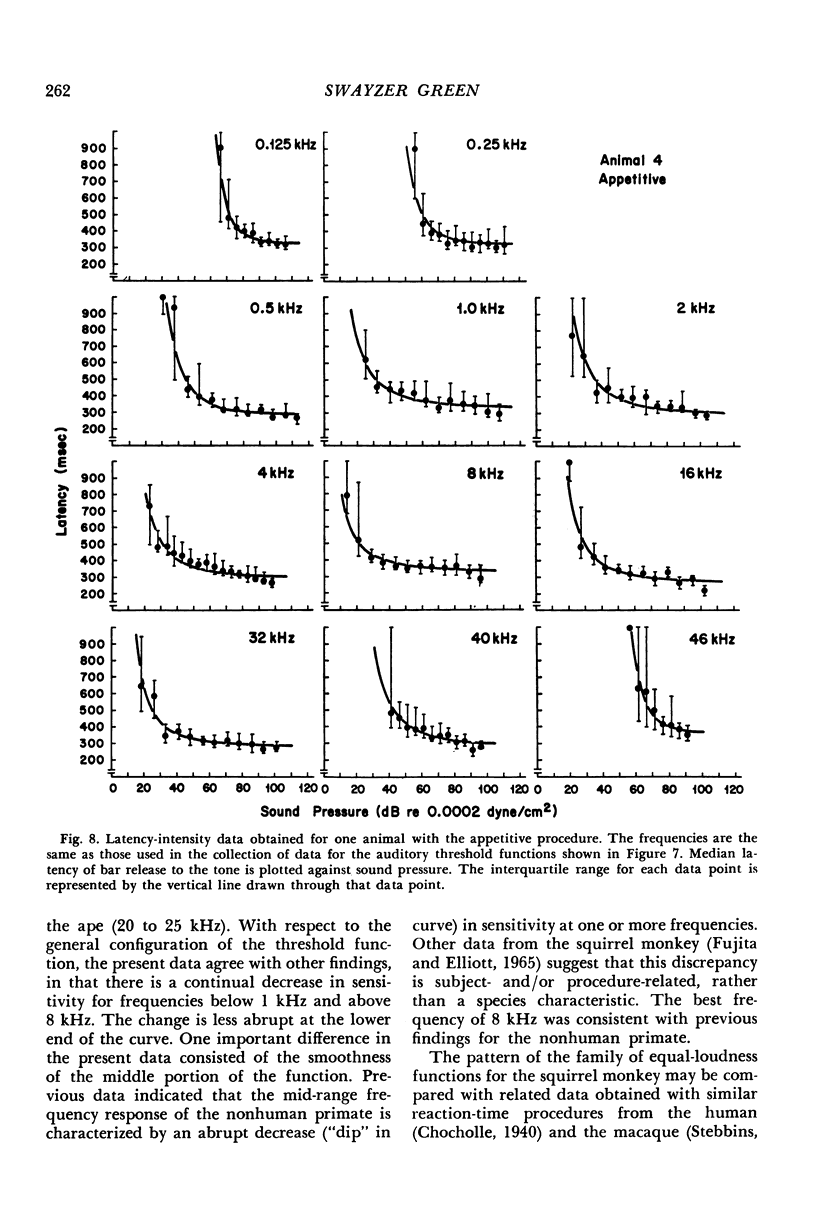
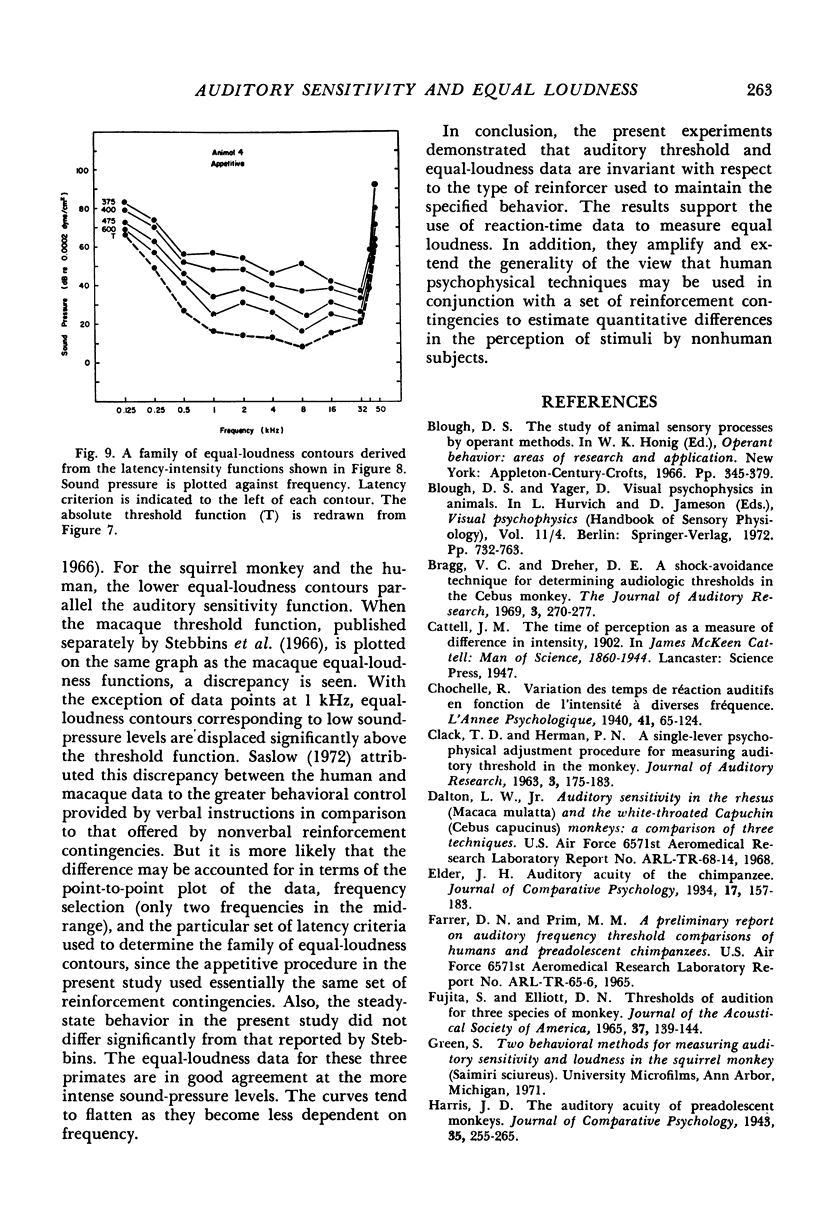
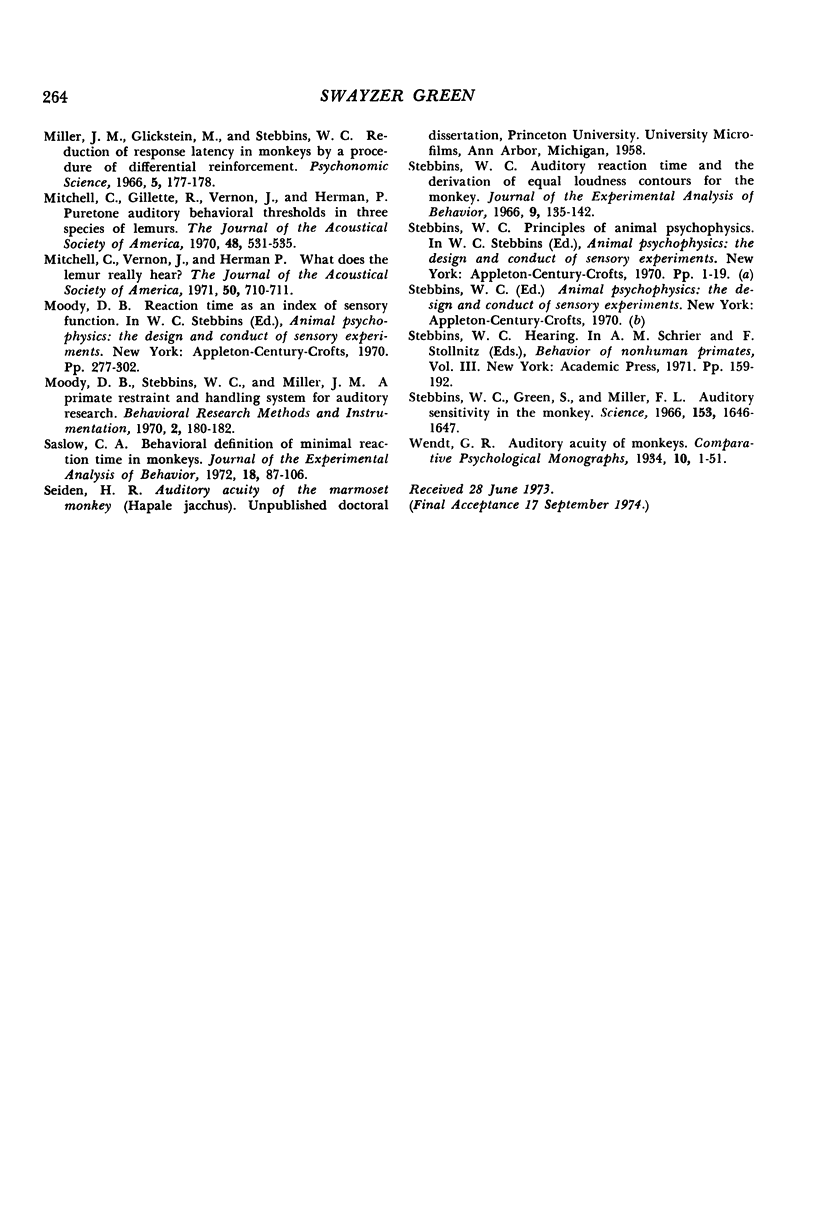
Images in this article
Selected References
These references are in PubMed. This may not be the complete list of references from this article.
- FUJITA S., ELLIOTT D. N. THRESHOLDS OF AUDITION FOR THREE SPECIES OF MONKEYS. J Acoust Soc Am. 1965 Jan;37:139–144. doi: 10.1121/1.2143403. [DOI] [PubMed] [Google Scholar]
- Mitchell C., Gillette R., Vernon J., Herman P. Pure-tone auditory behavioral thresholds in three species of lemurs. J Acoust Soc Am. 1970 Aug;48(2):531–535. doi: 10.1121/1.1912168. [DOI] [PubMed] [Google Scholar]
- Mitchell C., Vernon J., Herman P. What does the lemur really hear? J Acoust Soc Am. 1971 Aug;50(2):710–711. doi: 10.1121/1.1912687. [DOI] [PubMed] [Google Scholar]
- Saslow C. A. Behavioral definition of minimal reaction time in monkeys. J Exp Anal Behav. 1972 Jul;18(1):87–106. doi: 10.1901/jeab.1972.18-87. [DOI] [PMC free article] [PubMed] [Google Scholar]
- Stebbins W. C. Auditory reaction time and the derivation of equal loudness contours for the monkey. J Exp Anal Behav. 1966 Mar;9(2):135–142. doi: 10.1901/jeab.1966.9-135. [DOI] [PMC free article] [PubMed] [Google Scholar]
- Stebbins W. C., Green S., Miller F. L. Auditory sensitivity of the monkey. Science. 1966 Sep 30;153(3744):1646–1647. doi: 10.1126/science.153.3744.1646-a. [DOI] [PubMed] [Google Scholar]



